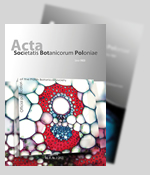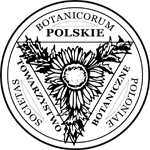Exogenous steroid hormones stimulate full development of autonomous endosperm in Arabidopsis thaliana
Abstract
Most flowering plants, including important crops, require double fertilization to form an embryo and endosperm, which nourishes it. Independence from fertilization is a feature of apomictic plants that produce seeds, from which the plants that are clones of the mother plant arise. The phenomenon of apomixis occurs in some sexual plants under specific circumstances. Since the launch of a fertilization-independent mechanism is considered a useful tool for plant breeding, there have been efforts to artificially induce apomixis. We have been able to produce fertilization-independent endosperm in vitro in Arabidopsis over the last few years. This paper demonstrates the methods of improving the quality of the endosperm obtained using plant and mammalian steroid hormones. Additionally, it shows the study on the autonomous endosperm (AE) formation mechanism in vitro.
This paper examines the effect of exogenous steroid hormones on unfertilized egg and central cell divisions in culture of unpollinated pistils of Arabidopsis Col-0 wild-type and fie-1 mutant. All media with hormones used (estrone, androsterone, progesterone, and epibrassinolide) stimulated central cell divisions and fertilization-independent endosperm development. The stages of AE development followed the pattern of Arabidopsis thaliana wild type after fertilization. Subsequent stages of AE were observed from 2-nuclear up to cellular with the most advanced occurring on medium with 24-epibrassinolide and progesterone. The significant influence of mammalian sex hormones on speed of AE development and differentiation was noticed. Using restriction analysis, the changes in methylation of FIE gene was established under in vitro condition. The authors of this paper showed that Arabidopsis thaliana has a high potency to fertilization-independent development.
Keywords
Full Text:
PDFReferences
Lafon-Placette C, Köhler C. Embryo and endosperm, partners in seed development. Curr Opin Plant Biol. 2014;17:64–69. http://dx.doi.org/10.1016/j.pbi.2013.11.008
Tucker MR, Koltunow AMG. Sexual and asexual (apomictic) seed development in flowering plants: molecular, morphological and evolutionary relationships. Func Plant Biol. 2009;36:490–504. http://dx.doi.org/10.1071/FP09078
Rodrigez-Leal D, Vielle-Calzada JP. Regulation of apomixis: learning from sexual experience. Curr Opin Plant Biol. 2012;15:549–555. http://dx.doi.org/10.1016/j.pbi.2013.11.015
Ravi M, Marimuthu MPA, Siddiqi I. Gamete formation without meiosis in Arabidopsis. Nature. 2008;451:1121–1124. http://dx.doi.org/10.1038/nature06557
Eckardt A. A role for ARGONAUTE in apomixis. Plant Cell. 2011;23:430. http://dx.doi.org/10.1105/tpc.111.230211
Schmidt A, Wöhrmann HJP, Raissig MT, Arand J, Gheyselinck J, Gagliardini V, et al. The Polycomb group protein MEDEA and the DNA methyltrasferase MET1 interact to repress autonomous endosperm development in Arabidopsis. Plant J. 2013;73:776–787. http://dx.doi.org/10.1111/tpj.12070
Vinkenoog R, Spielman M, Adams S, Fischer RL, Dickinson HG, Scott RJ. Hypomethylation promotes autonomous endosperm development and rescues postfertilization lethality in fie mutants. Plant Cell. 2000;12:2271–2282. http://dx.doi.org/10.1105/tpc.12.11.2271
Rojek J, Kuta E, Bohdanowicz J. In vitro culture promotes partial autonomous endosperm development in unfertilized ovules of wild-type Arabidopsis thaliana var. Columbia. Sex Plant Reprod. 2005;18:29–36. http://dx.doi.org/10.1007/s00497-005-0246-z
Kapusta M, Rojek J, Bohdanowicz J. Induction of autonomous endosperm development in ovules of unpollinated pistils of Arabidopsis thaliana var. Landsberg, cultured in vitro. Acta Biol Cracov Ser Bot. 2007;49:53–59.
Rojek J, Kuta E, Kapusta M, Ihnatowicz A, Bohdanowicz J. The influence of fie and met1 mutation and in vitro culture conditions on autonomous endosperm development in unfertilized ovules of Arabidopsis thaliana. Acta Biol Cracov Ser Bot.2013;55:134–145. http://dx.doi.org/10.2478/abcsb-2013-0032
Bajguz A, Tretyn A. The chemical characteristic and distribution of brassinosteroids in plants. Phytochemistry. 2003;62:1027–1046. http://dx.doi.org/10.1016/S0031-9422(02)00656-8
Janeczko A. Brassinosteroids in agriculture, horticulture and in vitro culture. Kosmos. 2005;2–3:259–265.
Yang CJ, Zhang C, Lu YN, Jin JQ, Wang XL. The mechanism of brassinosteroids’ action: from signal transduction to plant development. Mol Plant. 2011;4:588–600. http://dx.doi.org/10.1093/mp/ssr020
Hewitt S, Hillman JR, Knights BA. Steroidal oestrogens and plant growth and development. New Phytol. 1980;85:329–350. http://dx.doi.org/10.1111/j.1469-8137.1980.tb03172.x
Kim SY, He Y, Jacob Y, Noh YS, Michaels S, Amasino R. Establishment of the vernalization-responsive, winter-annual habit in Arabidopsis requires a putative histone H3 methyl transferase. Plant Cell. 2005;17:3301–3310. http://dx.doi.org/10.1105/tpc.105.034645
Montoya T, Nomura T, Yokota T, Farrar K, Harrison K, Jones JGD, et al. Patterns of Dwarf expression and brassinosteroid accumulation in tomato reveal the importance of brassinosteroid synthesis during fruit development. Plant J. 2005;42:262–269. http://dx.doi.org/10.1111/j.1365-313X.2005.02376.x
Fu FQ, Mao WH, Shi K, Zhou YH, Asami T, Yu JQ. A role of brassinosteroids in early fruit development in cucumber. J Exp Bot. 2008;59:2299–2308. http://dx.doi.org/10.1093/jxb/ern093
Hanano S, Domagalska MA, Nagy F, Davis SJ. Multiple phytohormones influence distinct parameters of the plant circadian clock. Genes Cells. 2006;11:1381–1392. http://dx.doi.org/10.1111/j.1365-2443.2006.01026.x
Krishna P. Brassinosteroid-mediated stress responses. J Plant Growth Regul. 2003;22:289–297. http://dx.doi.org/10.1007/s00344-003-0058-z
Janeczko A, Filek W, Biesaga-Kościelniak J, Marcińska I, Janeczko Z. The influence of animal sex hormones on the induction of flowering in Arabidopsis thaliana: comparison with the effect of 24-epibrassinolide. Plant Cell Tissue Organ Cult. 2003;72:147–151. http://dx.doi.org/10.1023/A:1022291718398
Hu Y, Bao F, Li J. Promotive effect of brassinosteroids on cell division involves a distinct CycD3-induction pathway in Arabidopsis. Plant J. 2000;24:693–701. http://dx.doi.org/10.1046/j.1365-313x.2000.00915.x
Janeczko A, Skoczkowski A. Mammalian sex hormones in plants. Folia Histochem Cytobiol. 2005;43:71–79.
Yang XH, Xu ZH, Xue HW. Arabidopsis membrane steroid binding protein 1 is involved in inhibition of cell elongation. Plant Cell. 2005;17:116–31. http://dx.doi.org/10.1105/tpc.104.028381
Janeczko A, Oklešt’ková J, Siwek A, Dziurka M, Pociecha E, Kocurek M, et al. Endogenous progesterone and its cellular binding sites in wheat exposed to drought stress. J Steroid Biochem Mol Biol. 2013;138:384–394. http://dx.doi.org/10.1016/j.jsbmb.2013.07.014
Janeczko A, Filek W. Stimulation of generative development in partly vernalized winter wheat by animal sex hormones. Acta Physiol Plant. 2002;24:291–295. http://dx.doi.org/10.1007/s11738-002-0054-0
Erdal S, Dumlupinar R. Mammalian sex hormones stimulate antioxidant system and enhance growth of chickpea plants. Acta Physiol Plant. 2011;33:1011–1017. http://dx.doi.org/10.1007/s11738-010-0634-3
Kislev KV, Tyunin AP, Karetin YA. Influence of 5-azacytidine and salicylic acid on demethylase gene expression in cell cultures of Vitis amurensis Rupr. Acta Physiol Plant. 2013;35:1843–1851. http://dx.doi.org/10.1007/s11738-013-1222-0
Fieldes MA, Schaeffer SM, Krech MJ, Brown JCL. DNA hypomethylation in 5-azacitidine-induced early-flowering lines of flax. Theor Appl Genet. 2005;111:136–149. http://dx.doi.org/10.1007/s00122-005-2005-9
Poirier F, Bourin P, Bladier D, Joubert-Caron R, Caron M. Effect of 5-azacytidine and galectin-1 on growth and differentiation of the human b lymphoma cell line bl36. Cancer Cell Int. 2001;1:2. http://dx.doi.org/10.1186/1475-2867-1-2
Christman JK. 5-Azacytidine and 5-aza-2-deoxycytidine as inhibitors of DNA methylation: mechanistic studies and their implication for cancer therapy. Oncogene. 2002;21:5483–5495. http://dx.doi.org/10.1038/sj.onc.1205699
Kaminskas E, Farrel AT, Wang YC, Sridhara R, Pazdur R. FDA drug approval summary: azacitidine (5-azacytidine, vidaza™) for injectable suspension. Oncologist. 2005;10:176–182. http://dx.doi.org/10.1634/theoncologist.10-3-176
Kondo H, Ozaki H, Itoh K, Kato A, Takeno K. Flowering induced by 5-azacytidine, a DNA demethylating reagent in a short-day plant, Perilla frutescens var. crispa. Physiol Plant. 2006;127:130–137. http://dx.doi.org/10.1111/j.1399-3054.2005.00635.x
Choi CS, Sano H. Abiotic-stress induces demethylation and transcriptional activation of a gene encoding a glycerophosphodiesterase-like protein in tobacco plants. Mol Genet Genomics. 2007;277:589–600. http://dx.doi.org/10.1007/s00438-007-0209-1
Ruiz-Garcia L, Cervera MT, Martinez-Zapater JM. DNA methylation increases throughout Arabidopsis development. Planta. 2005;222:301–306. http://dx.doi.org/10.1007/s00425-005-1524-6
Burn JE, Bagnall DJ, Metzger JD, Dennis ES, Peacock WJ. DNA methylation, vernalization, and the initiation of flowering. Proc Natl Acad Sci USA. 1990;90:287−291. http://dx.doi.org/10.1073/pnas.90.1.287
Köhler C, Wolff P, Spillane C. Epigenetic mechanisms underlying genomic imprinting in plants. Annu Rev Plant Biol. 2012;63:331–352. http://dx.doi.org/10.1146/annurev-arplant-042811-105514
Ohad N, Yadegari R, Margossian L, Hannon M, Michaeli D, Harada JJ, et al. Mutations in FIE, a WD Polycomb group gene, allow endosperm development without fertilization. Plant Cell. 1999;11:407–416. http://dx.doi.org/10.1105/tpc.11.3.407
Ohad N, Margossian L, Hsu YC, Williams C, Repetti P, Fischer RL. A mutation that allows endosperm development without fertilization. Proc Natl Acad Sci USA. 1996;93:5319–5324. http://dx.doi.org/10.1073/pnas.93.11.5319
Murashige T, Skoog F. A revised medium for rapid growth and bio assays with tobacco tissue cultures. Physiol Plant. 1962;15:473–497. http://dx.doi.org/10.1111/j.1399-3054.1962.tb08052.x
StatSoft Inc. STATISTICA (data analysis software system) version 9.1. Tulsa, OK; 2010.
Kuta E, Rojek J, Pawełek-Skoczylas A, Ślązak B, Bohdanowicz J. Autonomous endosperm induction in cultured unpollinated ovaries is strongly species dependent. Acta Biol Cracov Ser Bot. 2009;51(1 suppl):19.
Żabicki P, Rojek J, Kapusta M, Kuta E, Bohdanowicz J. Effect of estrone on somatic and female gametophyte cell division and differentiation in Arabidopsis thaliana cultured in vitro. Modern Phytomorphology. 2014;5:25–30.
Iino M, Nomura T, Tamaki Y, Yamada Y, Yoneyama K, Takeuchi Y, et al. Progesterone: its occurrence in plants and involvement in plant growth. Phytochemistry. 2007;68:1664–1673. http://dx.doi.org/10.1016/j.phytochem.2007.04.002
Ylstra B, Touraev A, Brinkmann AO, Heberle-Bors E, Tunen AJV. Steroid hormones stimulate germination and tube growth of in vitro matured tobacco pollen. Plant Physiol. 1995;107:639–643.
Faure JE, Rotman N, Fortuné P, Dumas C. Fertilization in Arabidopsis thaliana wild type: developmental stages and time course. Plant J. 2002;30:481–488. http://dx.doi.org/10.1046/j.1365-313X.2002.01305.x
He K, Gou X, Yuan T, Lin H, Asami T, Yoshida S, et al. BAK1 and BKK1 regulate brassinosteroid-dependent growth and brassinosteroid-independent cell-death pathways. Curr Biol. 2007;17:1109–1115. http://dx.doi.org/10.1016/j.cub.2007.05.036
Veit B. Determination of cell fate in apical meristems. Curr Opin Plant Biol. 2004;7:57–64. http://dx.doi.org/10.1016/j.pbi.2003.11.009
Curtis M, Grossniklaus U. Molecular control of autonomous embryo and endosperm development. Sex Plant Reprod. 2008;21:79–88. http://dx.doi.org/10.1007/s00497-007-0061-9
DOI: https://doi.org/10.5586/asbp.2015.022
|
|
|







